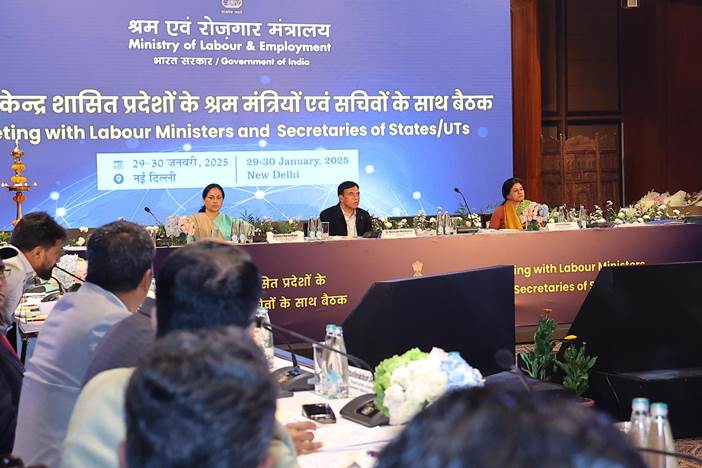
Navigating India’s New Labor Codes: Implications and Opportunities for Businesses

The BGA India team, led by Managing Director Anuj Gupta, wrote an update to clients on India’s new labor codes.
Context
- India formally operationalized its four consolidated labor codes on wages (2019); industrial relations (2020); social security (2020); and occupational safety, health and working conditions (2020), replacing 29 existing laws. This marks India’s most comprehensive labor-governance overhaul in decades, aimed at building a more uniform, modern and nationally consistent regulatory framework.
- The codes introduce major structural shifts by creating a streamlined, transparent and globally aligned industrial relations framework. The codes took effect November 21. Companies will need to restructure payroll systems, implement digital compliance tools, develop employee skills and maintain proactive engagement with both state and central authorities. By adopting robust compliance practices and closely tracking state-specific developments, organizations can mitigate the risk of penalties and create a safer, fairer and more productive workplace.
- For companies, the impact will be mixed but strategically important. The unified wage definition will raise employee social security liabilities and expand benefit obligations, creating short-term cost pressures. However, these are offset by longer-term gains: reduced compliance, clear and uniform national standards, fewer ambiguities and reduced litigation risk. Together, the codes move India toward a more formal, transparent labor market aligned with global human resources and supply chain standards, enabling firms to professionalize vendor networks, standardize workforce structures and plan operations with greater strategic confidence.
Significance
- The codes significantly expand statutory operational requirements through mandatory appointment letters, a national floor wage, stronger safety norms, social security inclusion for gig and platform workers and gender-inclusive provisions such as safe night shift rules and equal pay for women. At the same time, they introduce greater workplace flexibility by raising the hire-and-fire threshold from 100 to 300 workers for seeking government consent and recognizing fixed-term employment as a fully legitimate model. The enhanced worker welfare and greater operational flexibility aim to reshape India’s labor market toward more formal, structured and transparent workforce models.
- The codes provide long-term clarity on workforce architecture. Clear definitions for employees, workers, contractors, gig and platform workers and fixed-term staff create standardized compliance expectations across industries. For global companies, this reduces documentation disputes, strengthens governance defensibility and aligns Indian operations more closely with global environmental, social and governance standards; auditing; and supply chain due-diligence norms. This move is particularly relevant for digital platforms, logistics, e-commerce and last-mile delivery models.
- Implementation will be phased through central and state rulemaking. Some provisions take effect immediately, while operational details, especially around working hours, leave, safety standards and gig-worker schemes, will depend on state notifications. Many states have already published draft rules. This transition period requires close monitoring because rules may initially vary across jurisdictions. However, the long-term effect is consolidation, not divergence, and a harmonized national framework that replaces decades of regulatory fragmentation.
Implications
- The compliance architecture will shift decisively toward digitization and strengthening governance frameworks to align India’s labor standards with global benchmarks. Employers must maintain standardized digital registers, consistent payroll calculations, audit-ready records and documented safety and working-condition protocols.
- For businesses, the codes present both cost implications and strategic opportunities. While higher labor costs may impact the competitiveness of businesses operating in India, these will be partially offset by reduced compliance expenses over time. Organizations may revisit decisions around labor intensity, automation adoption and state-level operations, yet they stand to gain from a structured labor framework aligned with global standards with clearer contracting norms. Multinational corporations seeking scale, consistency and long-term operational stability in India are likely to benefit significantly from these reforms.
If you have questions or comments, please contact BGA India Managing Director Anuj Gupta at agupta@bowergroupasia.com.
Best regards,
BGA India Team

Anuj Gupta
Managing Director
Anuj is a distinguished policy leader and strategist who has played a catalytic role across India’s government and private sector, guiding stakeholders through the country’s complex and evolving policy and investment landscape. As BGA’s India practice leader, he helps clients leverage the country’s rapid economic growth to advance their goals and strategies. Anuj previously led public policy efforts for the Tata Group, India’s largest business conglomerate, where he advised more than 30 group companies on policy affairs strategy. His interventions directly influenced high-stakes outcomes across diverse sectors, including technology, finance and manufacturing. Anuj spent a decade in the Indian and Abu Dhabi governments, where he ... Read More
×
























